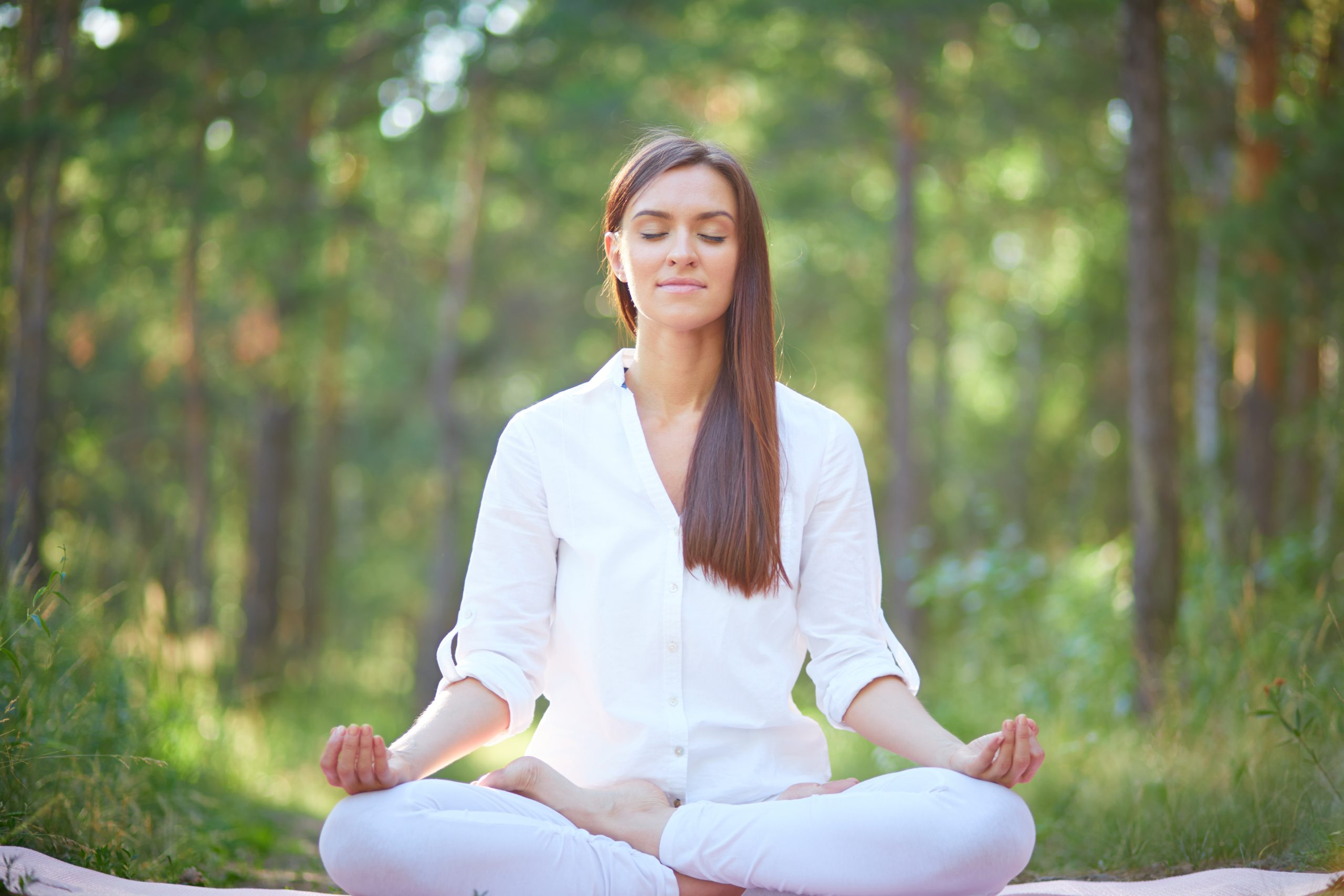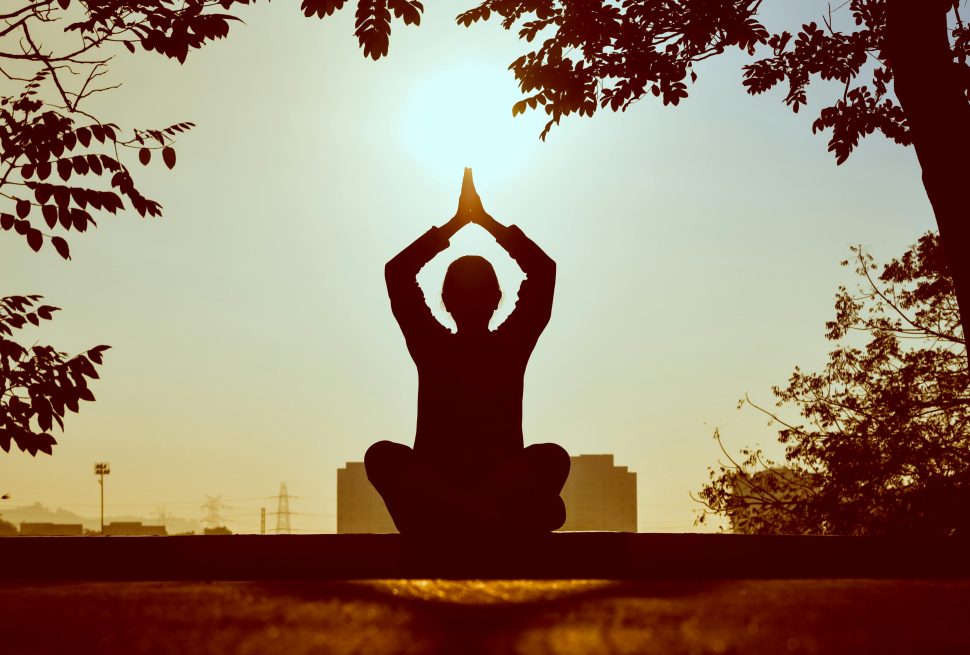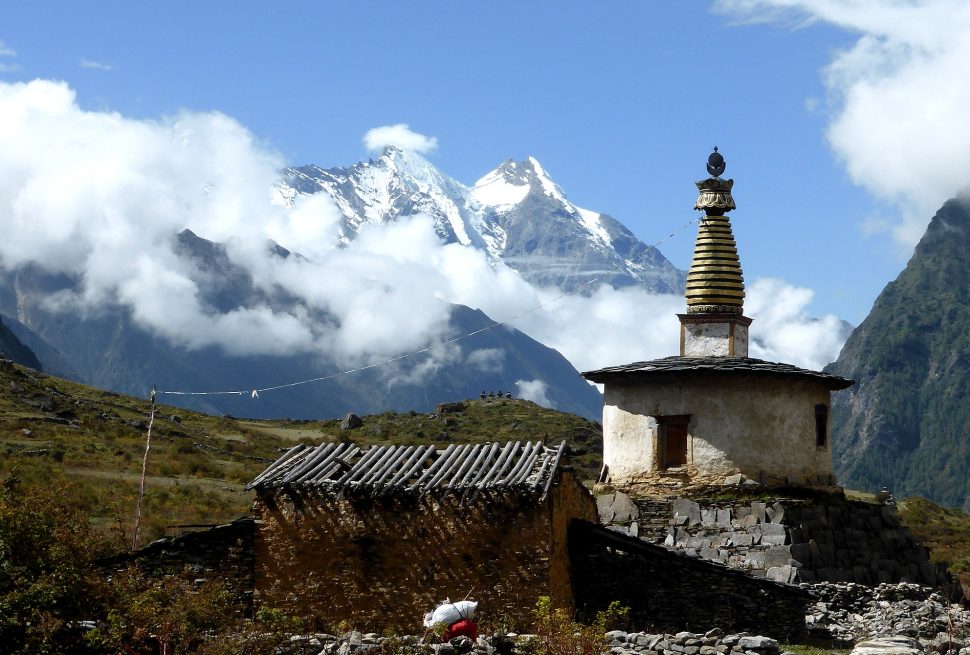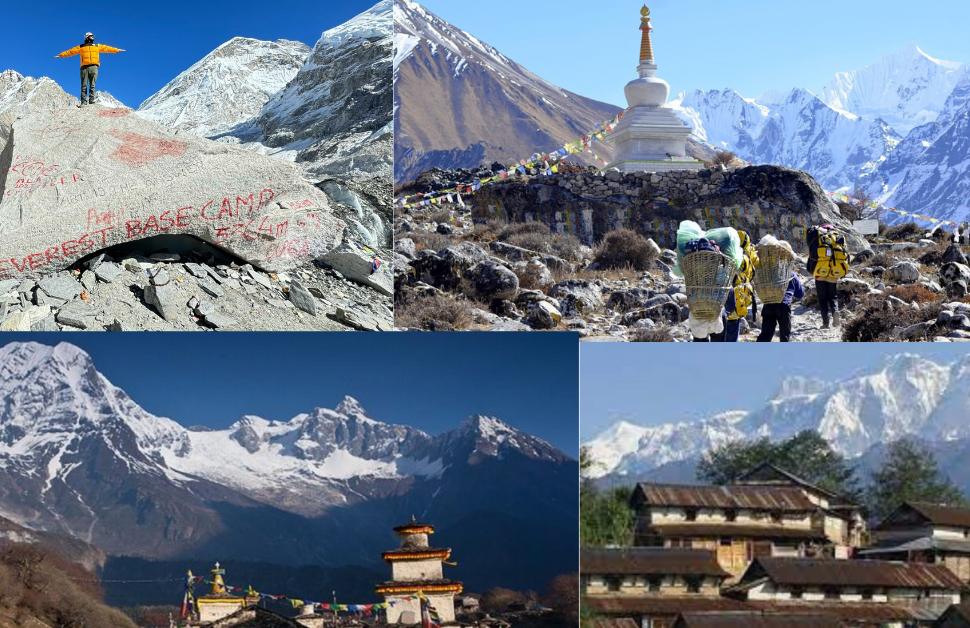As you embark on your yoga trek adventure, it’s crucial to integrate pranayama techniques into your journey. These powerful breathing exercises can significantly enhance your trekking experience, helping you navigate challenging terrains while maintaining a deep connection with your inner self and the breathtaking surroundings. Here, we’ll explore how to effectively integrate pranayama techniques into your yoga trek, ensuring a more mindful and enriching yoga trekking experience.
Understanding the Synergy Between Pranayama and Trekking

To fully appreciate the benefits of integrating pranayama techniques into your yoga trek, it’s essential to understand the powerful connection between breath control and physical exertion in high-altitude environments.
The Science Behind Pranayama in High Altitudes
When you integrate pranayama techniques into your yoga trek, you’re tapping into ancient wisdom supported by modern science. At higher altitudes, where oxygen is scarcer, controlled breathing becomes even more crucial. The practice of pranayama helps optimize your body’s oxygen utilization, allowing you to adapt more effectively to the challenging mountain environment.
Benefits of Pranayama for Trekkers
Integrating pranayama techniques into your yoga trek offers numerous benefits. You’ll experience improved oxygen utilization, which is crucial at high altitudes. Moreover, these breathing exercises enhance mental clarity and focus, helping you stay alert on challenging trails. Many trekkers also report reduced altitude sickness symptoms when practicing pranayama regularly. Perhaps most importantly, you’ll notice increased stamina and endurance, allowing you to enjoy longer treks with greater ease.
Overcoming Trekking Challenges with Breath Control
By learning to integrate pranayama techniques into your yoga trek, you’ll be better equipped to handle various challenges. Steep ascents become more manageable as you use your breath to pace yourself and maintain energy. The thin air at high altitudes feels less daunting when you have effective breathing techniques at your disposal. Long hours of physical exertion become more bearable as pranayama helps you stay centered and focused. Additionally, these techniques prove invaluable in combating mental fatigue and stress that often accompany demanding treks.
Pranayama as a Mindfulness Tool on the Trail
As you integrate pranayama techniques into your yoga trek, you’ll discover that these practices serve as powerful mindfulness tools. The focus on breath helps you stay present, allowing you to fully appreciate the stunning landscapes around you. This mindful approach transforms your trek from a mere physical challenge into a moving meditation, deepening your connection with nature and yourself.
Essential Pranayama Techniques for Your Yoga Trek
To successfully integrate pranayama techniques into your yoga trek, it’s important to familiarize yourself with key breathing exercises that are particularly beneficial for high-altitude adventures.
Ujjayi Breath: The Victorious Breath for Trekkers
Ujjayi, often called the “ocean breath,” is an excellent technique to integrate into your yoga trek. This powerful breathing method helps maintain a steady rhythm during challenging climbs. By slightly constricting the back of your throat as you breathe, you create a soothing sound that helps you focus and maintain a consistent pace. Ujjayi breath is particularly useful when facing steep inclines or when you need to regulate your energy output.
Nadi Shodhana: Balancing Energy on the Trail
Alternate nostril breathing, or Nadi Shodhana, is another powerful way to integrate pranayama techniques into your yoga trek. This practice is particularly useful during rest breaks to restore balance to your nervous system. By alternating breath between the left and right nostrils, you help harmonize the two hemispheres of your brain, promoting mental clarity and emotional stability. This can be especially beneficial when dealing with the mental challenges of a long trek.
Kapalabhati: Energizing Breath for Mountain Peaks
The skull-shining breath, or Kapalabhati, can be integrated into your yoga trek to provide quick bursts of energy when facing particularly challenging sections of the trail. This dynamic breathing technique involves short, forceful exhalations followed by passive inhalations. It’s known for its invigorating effects, making it perfect for those moments when you need to summon extra strength or alertness. However, use this technique judiciously at higher altitudes, as it can be quite stimulating.
Bhramari: The Humming Bee Breath for Calm
When you integrate pranayama techniques like Bhramari into your yoga trek, you provide yourself with a tool for finding calm amidst the excitement and challenges of the journey. This soothing breath, which involves making a humming sound on the exhalation, has a profoundly calming effect on the nervous system. It’s particularly useful when you’re feeling overwhelmed by the magnitude of the mountains or the physical demands of the trek. Practicing Bhramari can help quiet your mind and restore a sense of peace and tranquility.
Practical Tips to Integrate Pranayama Techniques into Your Yoga Trek
As you prepare to integrate pranayama techniques into your yoga trek, it’s essential to have a practical approach. These tips will help you seamlessly incorporate breath work into your trekking routine, enhancing both your physical performance and mental state.
Creating a Pre-Trek Pranayama Routine
Before you begin each day’s trek, it’s crucial to integrate pranayama techniques into your morning routine. Start your day with 5-10 minutes of Ujjayi breath to center yourself and prepare for the journey ahead. This can be done while still in your sleeping bag or as you prepare your gear. Follow this with a few rounds of Nadi Shodhana to balance your energy and clear your mind. Conclude your morning practice with a short session of Kapalabhati to energize your body and awaken your senses. This pre-trek routine sets a positive tone for the day and prepares your body and mind for the challenges ahead.
Incorporating Breath Work During Your Trek
To effectively integrate pranayama techniques into your yoga trek, try incorporating them throughout your day. Use Ujjayi breath while walking, especially on uphill sections, to maintain a steady rhythm and conserve energy. During water breaks, take a moment to practice a few rounds of Nadi Shodhana to rebalance your system and clear your mind. If you encounter particularly challenging or nerve-wracking sections of the trail, such as narrow paths or steep drop-offs, employ Bhramari breath to calm your nerves and maintain focus.
Utilizing Pranayama for Recovery
After a long day of trekking, integrate pranayama techniques into your evening routine to aid recovery and prepare for restful sleep. Begin with 10-15 minutes of Ujjayi breath to cool down and transition from the day’s activities. This helps signal to your body that it’s time to relax and begin the recovery process. Follow this with Nadi Shodhana to balance your system and release any remaining tension from the day’s exertions. End your practice with Bhramari to calm your mind and prepare for a deep, restorative sleep. This evening routine not only aids in physical recovery but also helps process the day’s experiences and prepare for the challenges of tomorrow.
Adapting Pranayama Practices to Altitude
As you ascend to higher altitudes, you’ll need to adjust how you integrate pranayama techniques into your yoga trek. Be mindful of the thinner air and decreased oxygen levels. Decrease the intensity of Kapalabhati as you gain elevation, as this energizing practice can be too stimulating at high altitudes. Instead, increase the duration of Ujjayi breath to improve oxygen uptake and maintain steady energy levels. Use Nadi Shodhana more frequently to combat altitude-related dizziness and maintain mental clarity. Remember to always listen to your body and adjust your practice as needed to suit the changing environmental conditions
Overcoming Challenges When Integrating Pranayama into Your Trek
While the benefits are numerous, you may face some obstacles as you integrate pranayama techniques into your yoga trek. Here’s how to address common challenges:
Dealing with Shortness of Breath
If you find yourself short of breath as you integrate pranayama techniques into your yoga trek, it’s important to adjust your approach. Slow down your pace and focus on extending your exhalations. This can help you feel more in control of your breath and reduce anxiety. Take more frequent breaks to practice gentle Ujjayi breath, allowing your body to acclimatize and your breathing to normalize. Remember, it’s not a race, and listening to your body is crucial for a safe and enjoyable trek.
Maintaining Consistent Practice on the Trail
To successfully integrate pranayama techniques into your yoga trek, consistency is key. However, the demands of trekking can make it challenging to maintain a regular practice. Set reminders on your watch or phone to prompt you to take breathing breaks throughout the day. Consider partnering with a trekking buddy for mutual encouragement and accountability in your pranayama practice. You can also tie your pranayama practice to regular trek activities, such as water breaks or scenic viewpoints, making it a natural part of your trekking routine.
Adapting to Changing Weather Conditions
Weather can significantly impact your ability to integrate pranayama techniques into your yoga trek. In cold weather, use Ujjayi breath to warm your body from the inside out, creating internal heat that can help you stay comfortable. When trekking in hot conditions, employ cooling breaths like Sheetali (if you know it) to help regulate your body temperature. During windy conditions, find shelter for your pranayama practice to avoid dust and maintain focus. By adapting your practice to the weather, you can continue to reap the benefits of pranayama regardless of external conditions.
Balancing Pranayama with Physical Exertion
As you integrate pranayama techniques into your yoga trek, finding the right balance between breath work and physical exertion is crucial. Start with shorter pranayama sessions and gradually increase duration as you become more comfortable. Listen to your body and adjust your practice as needed, especially at higher altitudes where the air is thinner. If you’re feeling overly exerted, prioritize pranayama during rest periods rather than trying to practice while walking. Remember, the goal is to enhance your trekking experience, not to add unnecessary strain.
Advanced Strategies to Deepen Your Pranayama Practice on the Trek
As you become more comfortable with basic techniques, you can explore advanced methods to further integrate pranayama techniques into your yoga trek. These strategies will help you deepen your practice and enhance your overall trekking experience.
Combining Pranayama with Meditation
To truly integrate pranayama techniques into your yoga trek, try combining them with meditation. During rest stops, practice breath awareness meditation, focusing solely on the sensation of your breath moving in and out of your body. While walking, use mantra repetition in sync with your breath, creating a moving meditation that can help you maintain focus and energy. You can also engage in walking meditation, paying close attention to your breath and footsteps, which can turn your entire trek into a mindful, meditative experience.
Exploring Bandhas in Your Trekking Pranayama
Bandhas, or energy locks, can be incorporated as you integrate pranayama techniques into your yoga trek. Engage Mula Bandha (root lock) during uphill climbs to increase stability and core strength. Use Uddiyana Bandha (abdominal lock) during breath retention to enhance lung capacity and energize your solar plexus. Practice Jalandhara Bandha (throat lock) during seated pranayama to intensify the effects and direct energy flow. These subtle practices can significantly enhance the power of your pranayama and support your trekking endeavors.
Integrating Pranayama with Asana Practice
When you set up camp, integrate pranayama techniques into your yoga trek recovery routine. Begin your asana practice with Ujjayi breath to center yourself and prepare your body for movement. As you flow through your poses, incorporate breath retention (Kumbhaka) in seated postures to build lung capacity and increase your comfort with high-altitude breathing. Between asana sequences, use Nadi Shodhana to balance your energy and prepare for the next series of poses. This integrated practice can significantly enhance your recovery and prepare you for the next day’s trek.
Using Pranayama for Mental Challenges
As you integrate pranayama techniques into your yoga trek, use them to overcome mental hurdles that often arise during challenging journeys. Practice Bhramari breath when facing fear or anxiety on difficult terrain, allowing the soothing vibrations to calm your nervous system. Use Sama Vritti (equal breathing) to maintain focus during long, monotonous stretches of the trek, keeping your mind engaged and present. Employ Ujjayi breath to boost confidence before attempting challenging sections of the trek, using the sound of your breath to center yourself and summon inner strength.
The Transformative Power of Pranayama in Your Trekking Journey
When you fully integrate pranayama techniques into your yoga trek, you open the door to a profoundly transformative experience. Let’s explore the long-lasting benefits and how they can change your perspective on trekking and life.
Enhancing Mind-Body Connection
As you integrate pranayama techniques into your yoga trek, you’ll notice a significant enhancement in your mind-body connection. Your body awareness during physical exertion will increase dramatically, allowing you to move with greater efficiency and grace on challenging terrains. You’ll develop an improved ability to listen to your body’s needs, recognizing when to push forward and when to rest. This heightened awareness extends beyond the trek, fostering a deeper sense of connection between your breath, body, and surroundings in everyday life.
Cultivating Presence and Mindfulness
The practice of integrating pranayama techniques into your yoga trek fosters a greater appreciation for the present moment. As you focus on your breath while trekking, you’ll find yourself more attuned to the stunning natural environment around you. The rhythmic nature of pranayama helps reduce mental chatter, allowing you to fully immerse yourself in the experience of each step, each view, and each challenge. This enhanced awareness and focus can carry over into your daily life, helping you approach tasks and interactions with greater mindfulness and presence.
Boosting Emotional Resilience
Regular pranayama practice on your trek can lead to improved emotional resilience. You’ll find yourself better equipped to manage stress in challenging situations, whether it’s a steep climb, harsh weather, or unexpected setbacks. The calming effects of pranayama help maintain a positive outlook even in difficult circumstances. As you progress through your trek, you may notice greater emotional stability, with less reactivity to the ups and downs of the journey. This emotional balance can be a valuable tool not just on the trail, but in navigating life’s various challenges.
Deepening Spiritual Connection
As you integrate pranayama techniques into your yoga trek, you may experience a profound sense of unity with nature. The combination of breathwork and the awe-inspiring mountain environment can lead to moments of clarity and insight about your life’s path. Many trekkers report a deeper understanding of yogic philosophy in practice, as the challenges of the trek provide real-world applications for concepts like non-attachment, presence, and interconnectedness. This spiritual dimension can add a rich layer of meaning to your trekking experience, potentially catalyzing personal growth and transformation.
Preparing for Your Pranayama-Integrated Yoga Trek
To fully benefit from integrating pranayama techniques into your yoga trek, proper preparation is key. This section will guide you through the essential steps to ensure you’re ready for this transformative journey.
Building a Strong Foundation
Before you integrate pranayama techniques into your yoga trek, it’s crucial to establish a solid practice. Begin a daily pranayama routine at least a month before your trek. Start with short sessions and gradually increase the duration and complexity of your practice. This gradual approach allows your body and mind to adapt to the techniques, making it easier to maintain your practice in the challenging mountain environment. As you practice, learn to gauge your limits and listen to your body’s signals. This self-awareness will be invaluable during your trek.
Essential Gear for Pranayama Practice
To successfully integrate pranayama techniques into your yoga trek, consider packing some essential items. A lightweight yoga mat or sitting cushion can provide comfort during your practice, especially on rocky or uneven ground. A shawl or blanket is useful for staying warm during breathing exercises, particularly at high altitudes where temperatures can drop quickly. Consider bringing a timer or using a smartphone app to track your pranayama sessions, helping you maintain consistency in your practice even in the wilderness.
Altitude Considerations for Pranayama
As you prepare to integrate pranayama techniques into your yoga trek at high altitudes, it’s important to take some precautions. Consult with a healthcare professional about high-altitude breathing exercises, especially if you have any respiratory conditions. Practice simulating high-altitude breathing using breath retention techniques to prepare your body for the thinner air. Familiarize yourself with the signs of altitude sickness and understand how pranayama can help alleviate some symptoms. However, always prioritize safety and be prepared to descend if serious altitude-related issues arise.
Creating a Pranayama Journal
To track your progress as you integrate pranayama techniques into your yoga trek, consider keeping a pranayama journal. Record your daily practice, noting the duration and techniques used. This can help you maintain consistency and observe patterns in your practice. Document any physical or mental changes you experience, such as improved breath capacity or increased mental clarity. Reflect on how pranayama impacts your trekking performance, noting any correlations between your breath work and your ability to handle challenging sections of the trail. This journal can be a valuable tool for self-reflection and continuous improvement in your practice.
Conclusion:
Integrating pranayama techniques into your yoga trek is a powerful way to enhance your journey, both physically and spiritually. By mastering these breathing exercises and applying them thoughtfully throughout your trek, you’ll not only improve your performance but also deepen your connection with nature and yourself. Remember, the key to success lies in consistent practice, mindful application, and a willingness to embrace the transformative power of breath. As you continue to integrate pranayama techniques into your yoga treks and daily life, you’ll discover new depths of strength, clarity, and inner peace. So take a deep breath, step onto the trail, and let your pranayama practice guide you to new heights of awareness and accomplishment.




